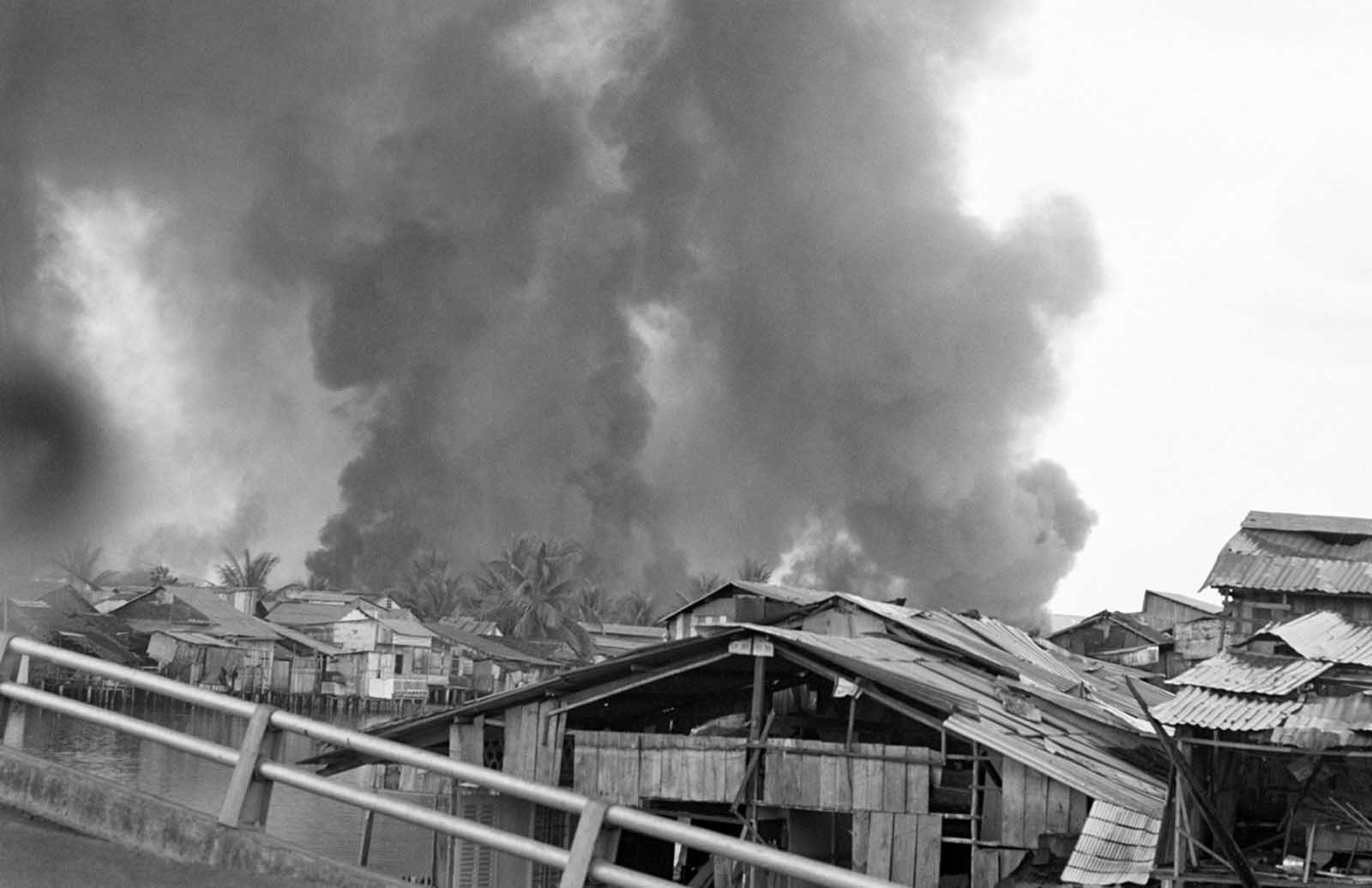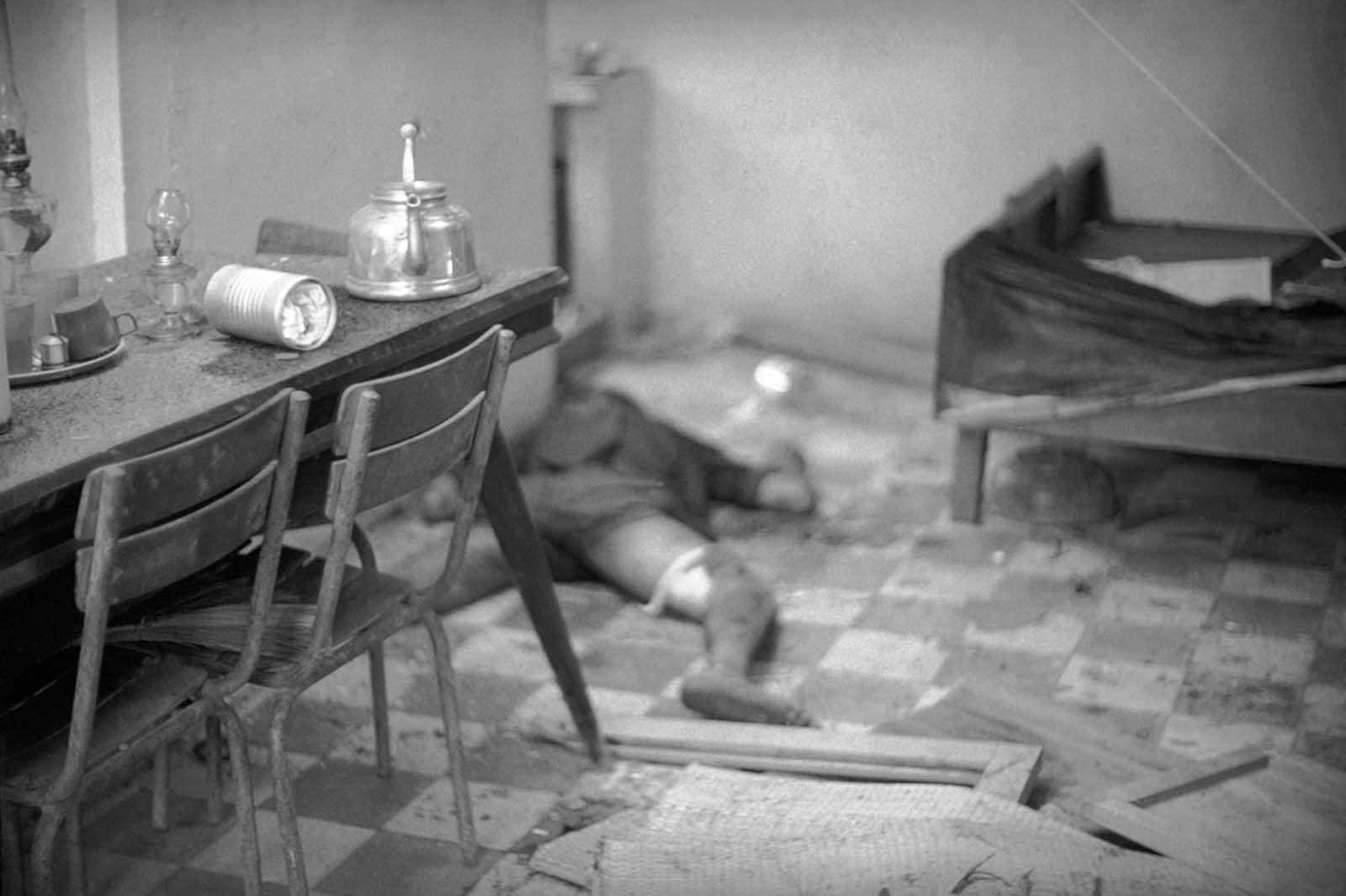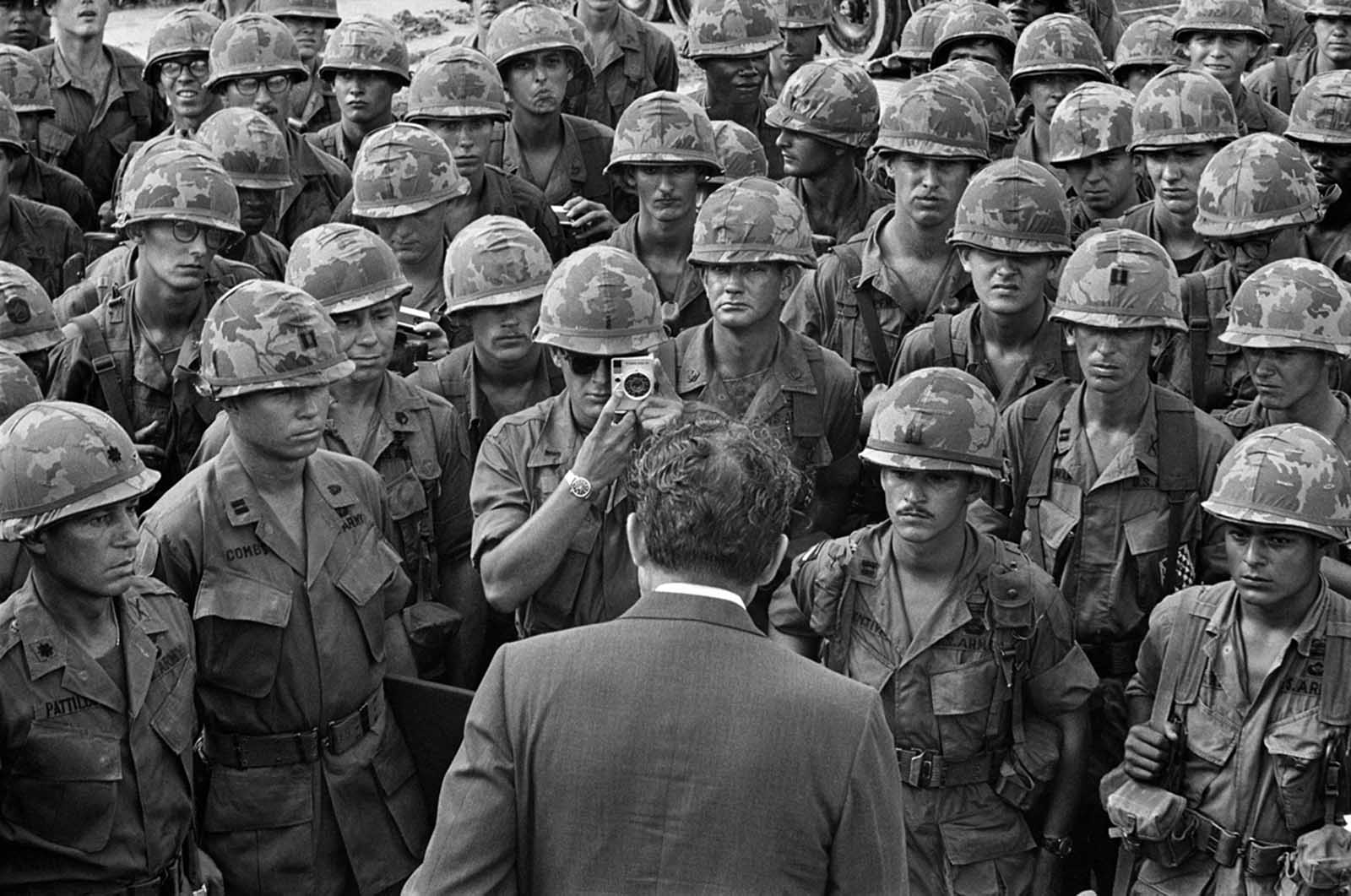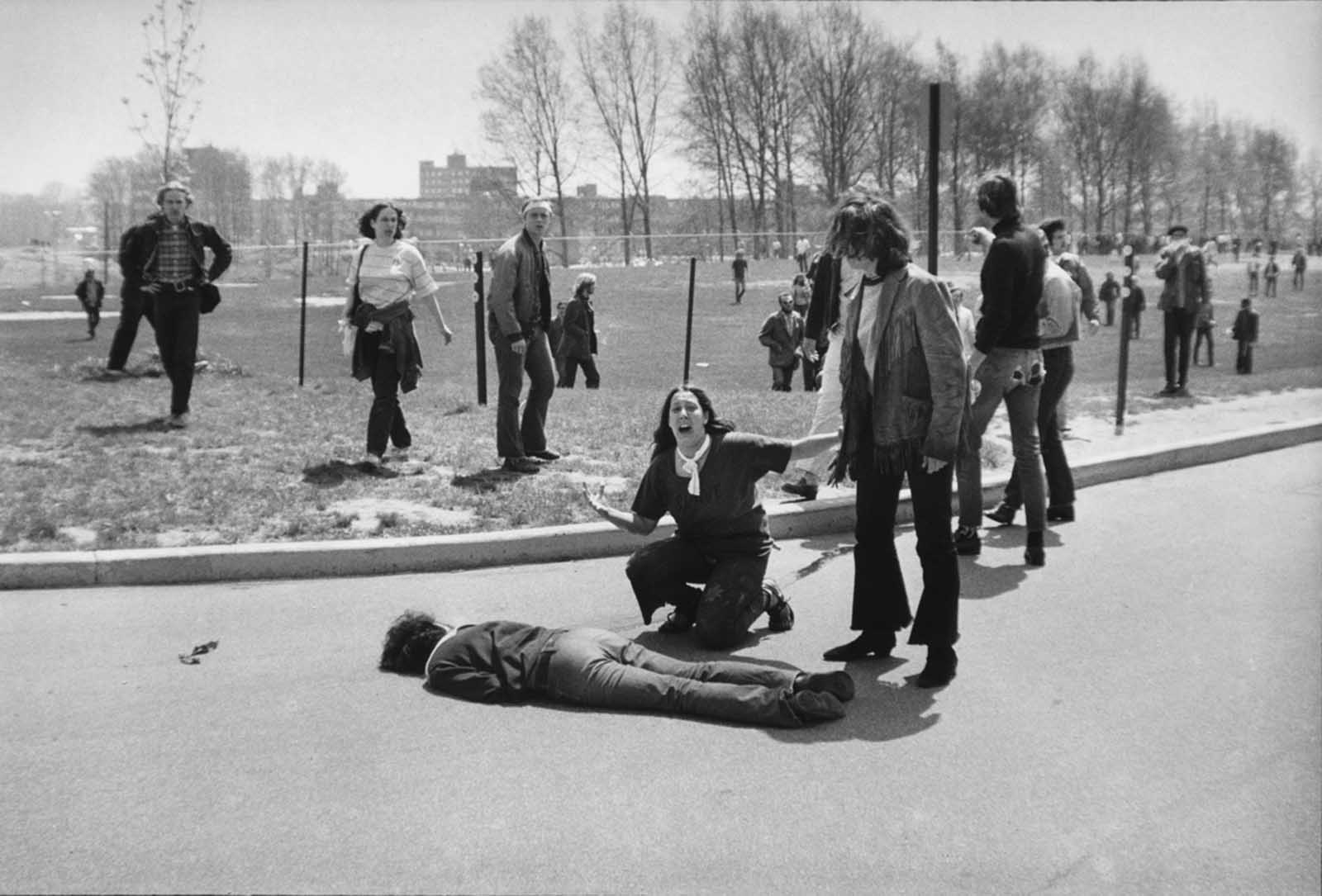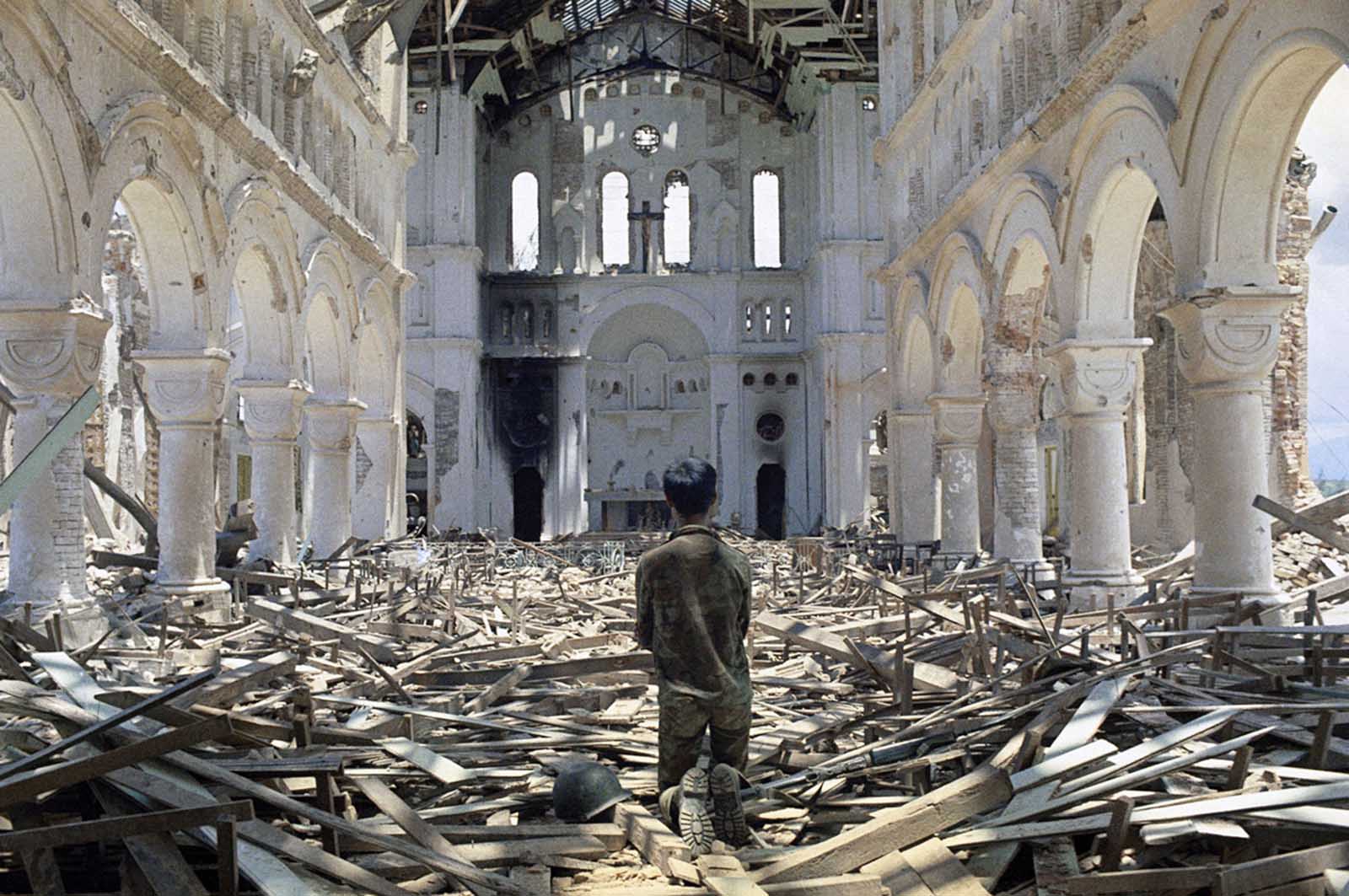The decisive year was 1968. In the early morning of 30 January, Vietcong forces launched the Tet Offensive, named for the Vietnamese holiday then being observed. In coordinated attacks throughout South Vietnam, the Vietcong assaulted major urban areas and military installations in an attempt to spark a popular uprising against the Saigon regime and its American backers. (Note: the other part of this photo collection: Vietnam War: The Early Years through rare photographs, 1965-1967). Heavy fighting ensued for three weeks, some of the most brutal at Hué. Westmoreland claimed victory because no cities were lost and thousands of casualties were inflicted upon the attackers. Indeed, the Vietcong lost so many soldiers that thereafter the PAVN took over much of the conduct of the war. The Tet Offensive, however, was a great strategic gain for North Vietnam and its southern adherents. U.S. and ARVN losses were high, and the fighting generated thousands of refugees that further destabilized the South. Most importantly, as a result of the massive surprise attack and the pictures from Saigon, the U.S. press and public began to challenge the Johnson administration’s assurances of success and to question the value of the increasingly costly war. At the same time as the Tet Offensive, the siege of Khe Sanh underscored the image of the war as an endless, costly, and pointless struggle. From 20 January to 14 April 1968, 30,000 to 40,000 NVA forces surrounded 6,000 U.S. Marines and ARVN at the remote hilltop outpost of Khe Sanh in the northwest corner of South Vietnam. Using artillery and airpower, including B‐52 strikes, the United States eventually broke the siege and forced an NVA withdrawal. At the end of June, however, the Marines abandoned the base to adopt a more mobile form of fighting in the DMZ area. Once again, a major engagement left seemingly intangible results. In March 1968, Johnson decided that the size of the U.S. effort in Vietnam had grown as large as could be justified. Prompted by a request from Westmoreland and JCS Chairman General Earle G. Wheeler for 206,000 more men, the president asked his new secretary of defense, Clark Clifford, for a thorough policy review. Johnson’s sense that a limit had been reached seemed confirmed when the “Wise Men,” a group of outside advisers including such elder statesmen as former Secretary of State Dean Acheson and Gen. Omar Bradley, recommended against further increases. The president authorized only 13,500 more soldiers and bluntly informed Thieu and Ky that their forces would have to carry more of the fighting. He then announced on television on 31 March 1968 that the United States would restrict the bombing of North Vietnam and pursue a negotiated settlement with Hanoi. Johnson also revealed that he would not seek reelection. Meanwhile, combat raged in South Vietnam. Over 14,000 Americans were killed in action in Vietnam in 1968, the highest annual U.S. death toll of the war. The worst U.S. war crime of the conflict occurred on 16 March 1968 (although not revealed in the press until 6 November 1969) when American infantrymen massacred some 500 unresisting civilians, including babies, in the village of My Lai. In April and May 1968 the largest ground operation of the war, with 110,000 U.S. and ARVN troops, targeted Vietcong and NVA forces near Saigon. Peace talks began in Paris on 13 May but were immediately deadlocked. On 10 June 1968, Gen. Creighton Abrams succeeded Westmoreland as MACV commander. In the fall Abrams began to shift U.S. strategy from attrition to a greater emphasis on combined operations, pacification area security, and what was called “Vietnamization,” that is, preparing the ARVN to do more of the fighting. When Richard M. Nixon became president in 1969, the U.S. war effort remained massive, but the basic decision to de‐escalate had already been reached. Nixon owed his political victory to voter expectation that somehow he would end the war. He and his principal foreign policy adviser, Henry Kissinger, rejected precipitate U.S. withdrawal. With the ground war stalemated, the new administration turned increasingly to air bombardment and secretly expanded the air war to neutral Cambodia. Publicly the White House announced in June the first withdrawal of 25,000 U.S. troops and heralded Vietnamization as effective. In fact, South Vietnam’s armed forces remained problem‐plagued. To bolster the South, the administration leaked to the press dire threats of a “go for broke” air and naval assault on the North—possibly including nuclear weapons. Kissinger also began secret meetings with North Vietnamese representatives in Paris hoping to arrange a diplomatic breakthrough. The morale and discipline of U.S. troops declined in 1969 as the futility of the ground war and the beginnings of U.S. withdrawal became more obvious. After an intense ten‐day battle in May, infantrymen of the 101st Airborne Division (Air Mobile) took a ridge in the A Shau Valley that they had dubbed Hamburger Hill. Having fought bravely and suffered significant losses, the soldiers were bitter when the site soon was abandoned. Such inability to see progress, and awareness among the troops that politicians back home were giving up on the war, helped undermine military effectiveness. Simple survival of their twelve‐month tour of duty became the only motivation for many soldiers. Incidents of insubordination, mutiny, fatal assaults on officers, drug use, racial tensions, and other serious problems increased. Faced with mounting public dissatisfaction, the slow pace of Vietnamization, and diplomatic frustration, Nixon boldly sent U.S. units into Cambodia in April 1970. U.S. military leaders had long complained about the sanctuary that neutral Cambodia provided Vietcong and NVA forces. This Cambodian incursion lasted until the end of June and provided some tactical gains, but it also sparked sharp controversy and demonstrations by the Vietnam antiwar movement in the United States over what seemed an expansion of the war to another country. U.S. troop reductions continued with only 334,600 in the South as 1970 ended. Nixon stuck with more of the same in 1971. Responding to domestic critics, he continued to order U.S. troops home, leaving only 156,000 by December. To support Vietnamization, heavy U.S. air attacks continued against Communist supply lines in Laos and Cambodia, and so‐called protective‐reaction strikes hit military targets north of the Demilitarized Zone and near Hanoi and its port city of Haiphong. Tactical air support continued, with the heaviest coming in March during a South Vietnamese assault into Laos. Code named Lam Son 719, this operation ended in a confused retreat by the ARVN that further sullied the notion of Vietnamization. During 1971, Kissinger made progress in the secret negotiations by offering to separate the arrangement of a ceasefire from discussion of the future of the Saigon government. In 1972 Nixon traveled to China and the USSR in diplomatic initiatives, trying to isolate Hanoi from its suppliers. With the shrinking American forces nearing 100,000 (only a small portion being combat troops), General Giap launched a spring 1972 offensive by Communist forces against the northern provinces of South Vietnam, the Central Highlands, and provinces northwest of Saigon. In most of the battles, the ARVN was saved by the massive B‐52 bombing. Nixon also launched the heavy bombers against North Vietnam itself in a campaign called Linebacker, and the United States mined the harbor at Haiphong. Over the course of the war, the total U.S. bombing tonnage far exceeded that dropped on Germany, Italy, and Japan in World War II. Wearied by the latest round of fighting, the United States and North Vietnamese governments agreed in October on a ceasefire, return of U.S. prisoners of war (POWs), at least the temporary continuation of Thieu’s government, and, most controversially, permission for NVA troops to remain in the South. Objections from Thieu caused Nixon to hesitate, which in turn led Hanoi to harden its position. In December, the United States hit North Vietnam again with repeated B‐52 attacks, codenamed Linebacker II and labeled the Christmas Bombing by journalists. On 27 January 1973, the United States, North Vietnam, South Vietnam, and the Provisional Revolutionary Government representing the NLF signed the Paris Peace Agreements Ending the War and Restoring Peace in Vietnam, which basically confirmed the October terms. By 1 April 1973, U.S. forces were out of Vietnam (except for a few embassy guards and attaches) and 587 POWs had returned home (about 2,500 other Americans remained missing in action). Congress cut off funds for the air war in Cambodia, and bombing there ended in August. Over Nixon’s veto, Congress passed the War Powers Resolution in November 1973. It limited presidential power to deploy U.S. forces in hostile action without congressional approval. Nixon characterized the Paris Peace Agreements of 1973 as “peace with honor,” but primarily they allowed the U.S. military to leave Vietnam without resolving the issue of the country’s political future. Without U.S. air and ground support, South Vietnam’s military defenses steadily deteriorated. In the spring of 1975, an NVA thrust into the Central Highlands turned into an ARVN rout. On 30 April, as NVA and Vietcong soldiers entered the city, the last remaining Americans abandoned the U.S. embassy in Saigon in a dramatic rooftop evacuation by helicopters. The United States’ failure in Vietnam raised important questions. Should the United States have fought the war at all? Did the United States fight the war the wrong way? Many analysts believe that the strategic importance of Vietnam was vastly exaggerated and, furthermore, that the nationalism driving Vietnam’s history and politics could not be altered by U.S. military power, no matter how great. An alternative view is that even if the odds were poor for U.S. success, the United States had to make the effort to maintain its moral and strategic credibility in the world. On the question of how the war was fought, the debate centers on whether the United States used its military power adequately and effectively. Assuming that more is better, some critics argue that greater use of U.S. forces, either against North Vietnam or to isolate the battlefield in South Vietnam, would have produced victory. Throughout the conflict, however, the Saigon regime proved incapable of translating military success into political success. Also, massive U.S. assistance seemed to prove North Vietnam’s and the Vietcong’s claims that South Vietnam was not a Vietnamese but an American creation. Finally, a larger war would have risked a dangerous military conflict with China and the Soviet Union. Most scholars conclude that the Vietnam War was a tragic event whose costs far exceeded any benefits for the United States. (Photo credit: U.S. Navy / AP / Library of Congress). Notify me of new posts by email.
Δ Subscribe


